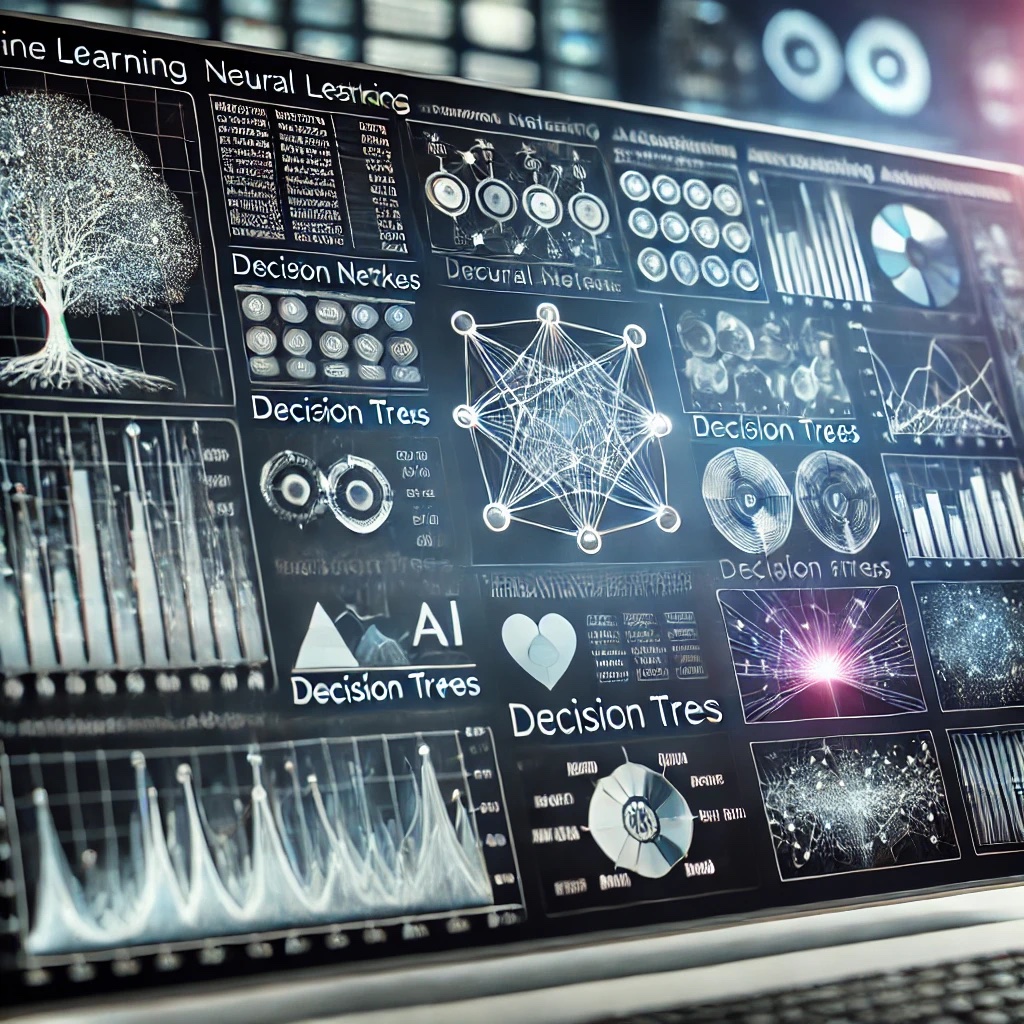We use cookies to make your experience better. To comply with the new e-Privacy directive, we need to ask for your consent to set the cookies. Learn more.

Top Machine Learning Algorithms Every Developer Should Know




Machine learning (ML) has become an integral part of modern technology, influencing how businesses, developers, and industries operate. Whether you're a seasoned developer or just starting out in the field, understanding the most essential machine learning algorithms is crucial. These algorithms not only form the backbone of AI systems but are also applied in various real-world projects across industries like healthcare, finance, and marketing. In this post, we'll take a deep dive into the most important machine learning algorithms, how they work, and where they can be effectively applied.
1. Decision Trees: Making Predictions with Simplicity
A decision tree is one of the most intuitive and widely used algorithms in machine learning. It works by splitting data into subsets based on the input features, leading to a tree-like model of decisions. The nodes of the tree represent the different features, while the leaves represent the outcomes. Decision trees are particularly effective for classification and regression tasks.
Real-World Applications:
In finance, decision trees are used to determine whether to approve a loan application based on factors like income, credit score, and employment history.
In healthcare, decision trees assist in diagnosing diseases by analyzing symptoms and medical test results.
Advantages:
- Simple and easy to understand.
- Requires minimal data preparation.
Disadvantages:
- Prone to overfitting with complex datasets.
- Not always accurate compared to more complex models.
2. Neural Networks: The Foundation of Deep Learning
Neural networks are inspired by the structure of the human brain and consist of interconnected layers of neurons. They are the foundation of deep learning, which is responsible for the most sophisticated AI applications today, including image recognition, natural language processing (NLP), and autonomous driving.
Real-World Applications:
Neural networks are used in facial recognition software to accurately identify individuals in images.
In NLP, neural networks are essential for chatbots and virtual assistants like Siri and Alexa, enabling them to understand and respond to human language.
Advantages:
- Can model complex, non-linear relationships.
- Highly flexible and applicable to a wide variety of problems.
Disadvantages:
- Requires large datasets and significant computational power.
- Difficult to interpret compared to simpler models.
3. K-Means Clustering: Grouping Data Points
K-means is a clustering algorithm that organizes data into distinct groups or "clusters" based on feature similarity. The algorithm works by initializing a set number of clusters and then iteratively adjusting them to minimize the distance between the data points and their cluster centroids.
Real-World Applications:
Marketing teams use K-means clustering to segment customers based on purchasing behavior, helping to tailor marketing strategies.
In image compression, K-means is used to reduce the number of colors in an image while maintaining visual quality.
Advantages:
- Simple and fast for large datasets.
- Works well when clusters are clearly defined.
Disadvantages:
- Sensitive to the initial placement of centroids.
- Struggles with non-spherical or overlapping clusters.
4. Support Vector Machines (SVM): Hyperplanes for Classification
Support Vector Machines (SVM) are powerful algorithms used for classification and regression tasks. The core idea behind SVM is to find a hyperplane that best divides a dataset into different classes. In cases where the data is not linearly separable, SVM can use a technique called the "kernel trick" to project data into higher dimensions.
Real-World Applications:
SVM is used in email filtering to classify incoming emails as spam or not spam based on various features.
In bioinformatics, SVM helps classify proteins and genes into different functional groups based on sequence data.
Advantages:
- Effective in high-dimensional spaces and for non-linear problems.
- Robust to overfitting, especially in high-dimensional feature spaces.
Disadvantages:
- Computationally intensive with large datasets.
- Harder to tune compared to simpler models.
5. Random Forest: A Collection of Decision Trees
Random forest is an ensemble learning technique that combines the output of multiple decision trees to improve the accuracy and reduce overfitting. Each tree in the forest makes its prediction, and the majority vote of the trees determines the final classification.
Real-World Applications:
In financial modeling, random forests are used to predict stock price movements by analyzing historical market data.
In healthcare, they help predict patient outcomes based on a variety of factors such as age, gender, and medical history.
Advantages:
- More accurate and less prone to overfitting than a single decision tree.
- Works well with both classification and regression tasks.
Disadvantages:
- Can be slower to train than simpler models.
- The resulting model can be difficult to interpret.
6. Naive Bayes: Probabilistic Classification
The Naive Bayes algorithm is based on Bayes' theorem, which calculates the probability of an event based on prior knowledge of conditions related to the event. Naive Bayes assumes that the features of the data are independent, which is why it's referred to as "naive." Despite this assumption, it works well in many real-world scenarios, especially for text classification.
Real-World Applications:
Naive Bayes is commonly used for sentiment analysis in social media monitoring, where it classifies text as positive, negative, or neutral.
It is also used in spam filtering, categorizing emails as spam or not based on word frequency.
Advantages:
- Simple to implement and efficient with large datasets.
- Works well with high-dimensional data, especially for text classification.
Disadvantages:
- The assumption of feature independence may not hold in all cases, potentially reducing accuracy.
Choosing the Right Algorithm for Your Project
Selecting the right machine learning algorithm depends on the type of problem you're trying to solve, the size and quality of your dataset, and the computational resources available. It's important to experiment with different algorithms to see which one works best for your specific use case. Here’s a general guideline to help you choose:
- Decision Trees/Random Forests: When interpretability and handling both categorical and numerical data are important.
- Neural Networks: When working with large, complex datasets that require deep learning capabilities, such as images, audio, or text.
- K-Means Clustering: When you need to group data without labeled outcomes.
- Support Vector Machines: When you're dealing with high-dimensional data or need a robust model for binary classification.
- Naive Bayes: When you're working with text classification or problems that involve conditional probabilities.



